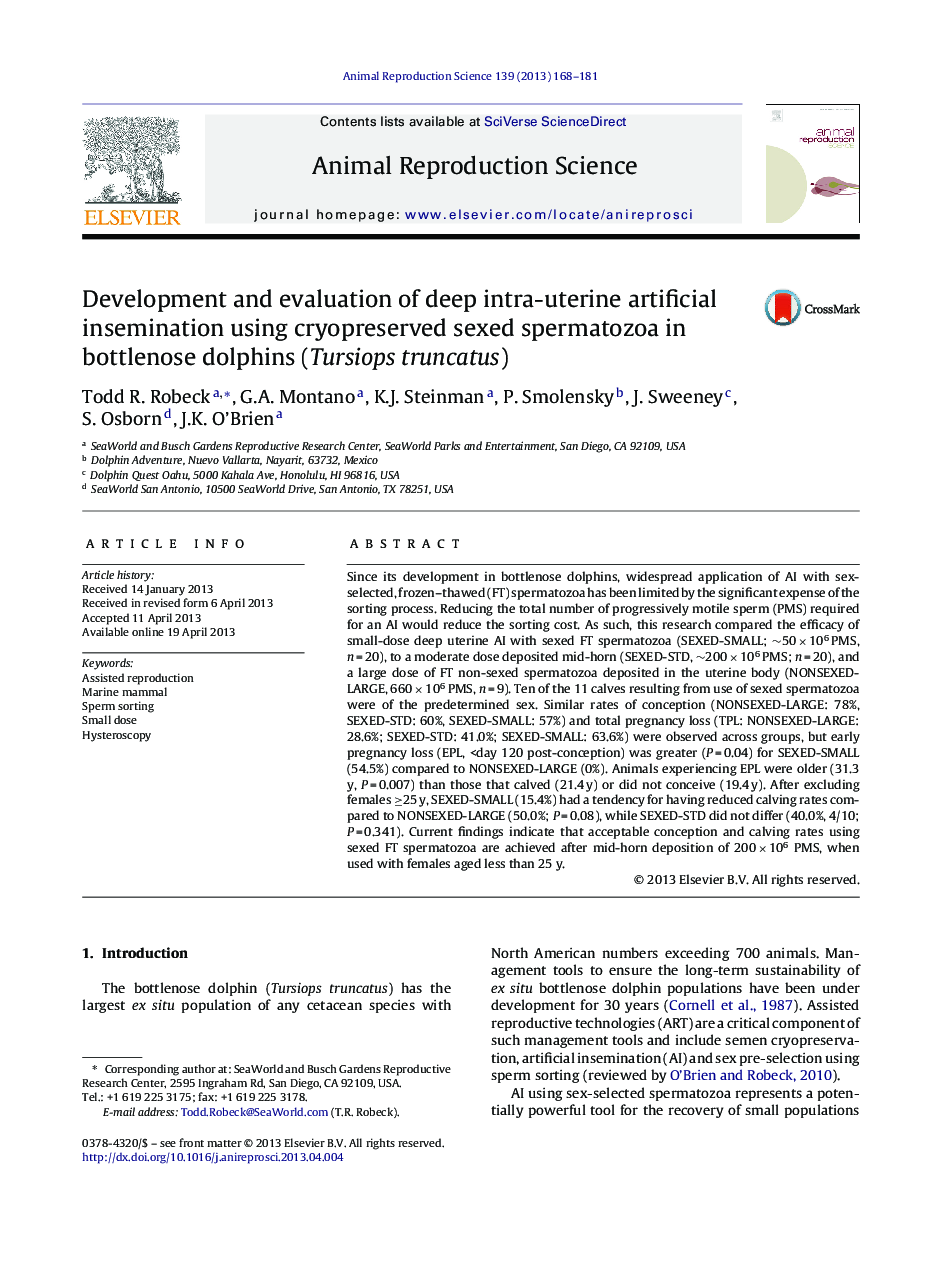| Article ID | Journal | Published Year | Pages | File Type |
|---|---|---|---|---|
| 2073048 | Animal Reproduction Science | 2013 | 14 Pages |
Since its development in bottlenose dolphins, widespread application of AI with sex-selected, frozen–thawed (FT) spermatozoa has been limited by the significant expense of the sorting process. Reducing the total number of progressively motile sperm (PMS) required for an AI would reduce the sorting cost. As such, this research compared the efficacy of small-dose deep uterine AI with sexed FT spermatozoa (SEXED-SMALL; ~50 × 106 PMS, n = 20), to a moderate dose deposited mid-horn (SEXED-STD, ~200 × 106 PMS; n = 20), and a large dose of FT non-sexed spermatozoa deposited in the uterine body (NONSEXED-LARGE, 660 × 106 PMS, n = 9). Ten of the 11 calves resulting from use of sexed spermatozoa were of the predetermined sex. Similar rates of conception (NONSEXED-LARGE: 78%, SEXED-STD: 60%, SEXED-SMALL: 57%) and total pregnancy loss (TPL: NONSEXED-LARGE: 28.6%; SEXED-STD: 41.0%; SEXED-SMALL: 63.6%) were observed across groups, but early pregnancy loss (EPL,
